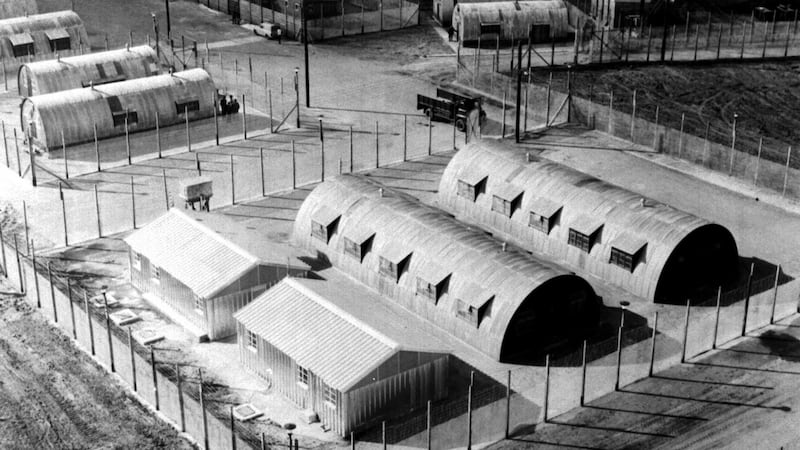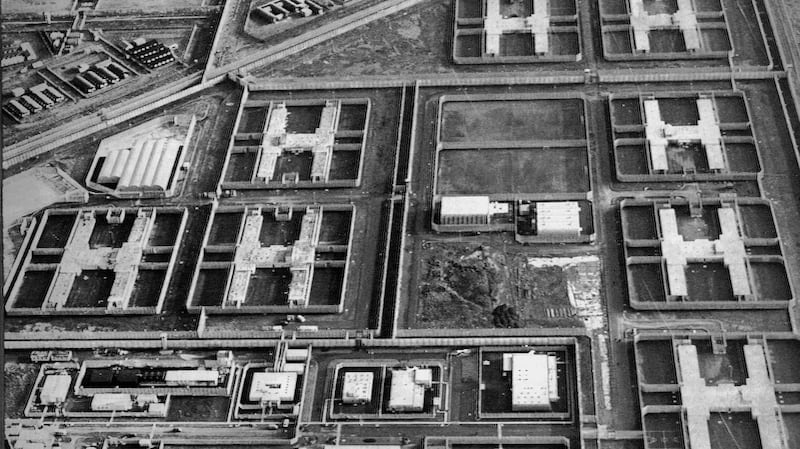Northern Ireland’s Long Kesh/Maze Prison has had something of a troubled history. Beginning life as a WW2 airfield, this 347-acre site was redeveloped first as Long Kesh internment camp and then, following extensive reconstruction, as HM Maze Prison. Through these guises it served an important function within the political developments of the Northern Irish Troubles.
It was first a “university of revolution” during the years of internment and then a site of fierce protest during the hunger strikes of 1981. Even with the onset of the peace process, this location has managed to retain its political significance. Since the prison’s closure in 2000, its buildings have been partly preserved and partly demolished, as Northern Ireland has debated how best to redevelop this site. While the nature of these plans remains controversial, the underlying prospect of redevelopment refuses to disappear.
In an age of global brands and ubiquitous consumption (there is a Spar on Inis Mór), ideas of distinction, authenticity and uniqueness have come to possess a particular value. Would Blarney Castle receive as many visitors without its monopoly on that most mythical of stones? Would the north coast of Antrim attract as many tourists without its legendary hexagonal landscape? Indeed, with their ability to cultivate a certain sense of distinction, sites of cultural heritage have become a big business in the twenty-first century.


Whether acknowledged or not, plans to redevelop the Long Kesh/Maze Prison have been driven by this logic. Since the last inmates left, the prison buildings have been constantly recognised (if in a misguided way) as providing a unique sense of place – a distinct “hook” upon which international investment can be hung. Early proposals to redevelop the site talked of using the prison to put the project “on the map”. Acknowledging its distinct history through some sort of museum would counteract, so the argument runs, the otherwise indistinguishable services (the same retail outlets) regeneration invariably entails. Subsequent plans have only served to reiterate this thinking. The remaining – now grade one listed – prison buildings have frequently been heralded as creating a “unique”, “historically significant” environment upon which multinational capital is free to speculate. In 2012 the prison’s “significant location” was held to offer the potential for £250 million of private sector investment.
From the perspective of a post-conflict Northern Ireland, the H-Blocks are often remembered as the focal point of the Troubles. Yet, for all their centrality, the protests and hunger strikes held within this prison do not sit easily in a broader narrative of the conflict.
“The outside was scared to make the logical extension of the struggle we were in,” remembers one veteran of the H-Blocks. “They felt fairly in control of the military campaign, but not of the hunger strike.” In many respects, the decision to fast to the death was a way of bridging this divide. The figure of the starving prisoner would, it was hoped, spark a revolution beyond the prison walls. This moment of rupture never arose, however, and in many subsequent imaginings of the H-Block struggles, this possibility has been dramatically exfoliated.
In 1981, the H-Blocks were a complex place: a volatile interface between life and politics, a paradoxical site of squalor and conviviality, an invisible space at the centre of the Troubles. Today, what remains of the prison is history at its most banal: a blank space for multinational investment, a misunderstood location for touristic pleasure.
There are, then, a marked set of tensions that underlie an attempt to monetise a memory of this site. For one thing, the confluence of consumer capital and historical authenticity creates something of an aporia – a deep contradiction between that which standardises (namely capitalism’s desire for ubiquitous consumption) and that which strives to be different (ie Long Kesh/Maze Prison as a site of exception).
Alongside and connected to this problem, is the question of who is to be empowered by the commodification of this space. If the whole of Northern Ireland has contributed to the prison’s history, should its preservation be steered by the prerogatives of private investment? In such a model, there is a danger that the redevelopment will simply serve the interests of the few.
Arguably the most distinct feature of the H-Blocks is the very restlessness of its collective history – the fact that its meaning is debated from all sides and positions. Attempting to finish that narrative under the auspices of corporate capital seems an obvious and immediate way of foreshortening that communal memory. That the Long Kesh/Maze Prison development remains unrealised 16 years after the site’s closure testifies to the complexities involved. That the prospect of redevelopment has never been taken off the table affirms the ineluctable power ideas of profit still hold.


















